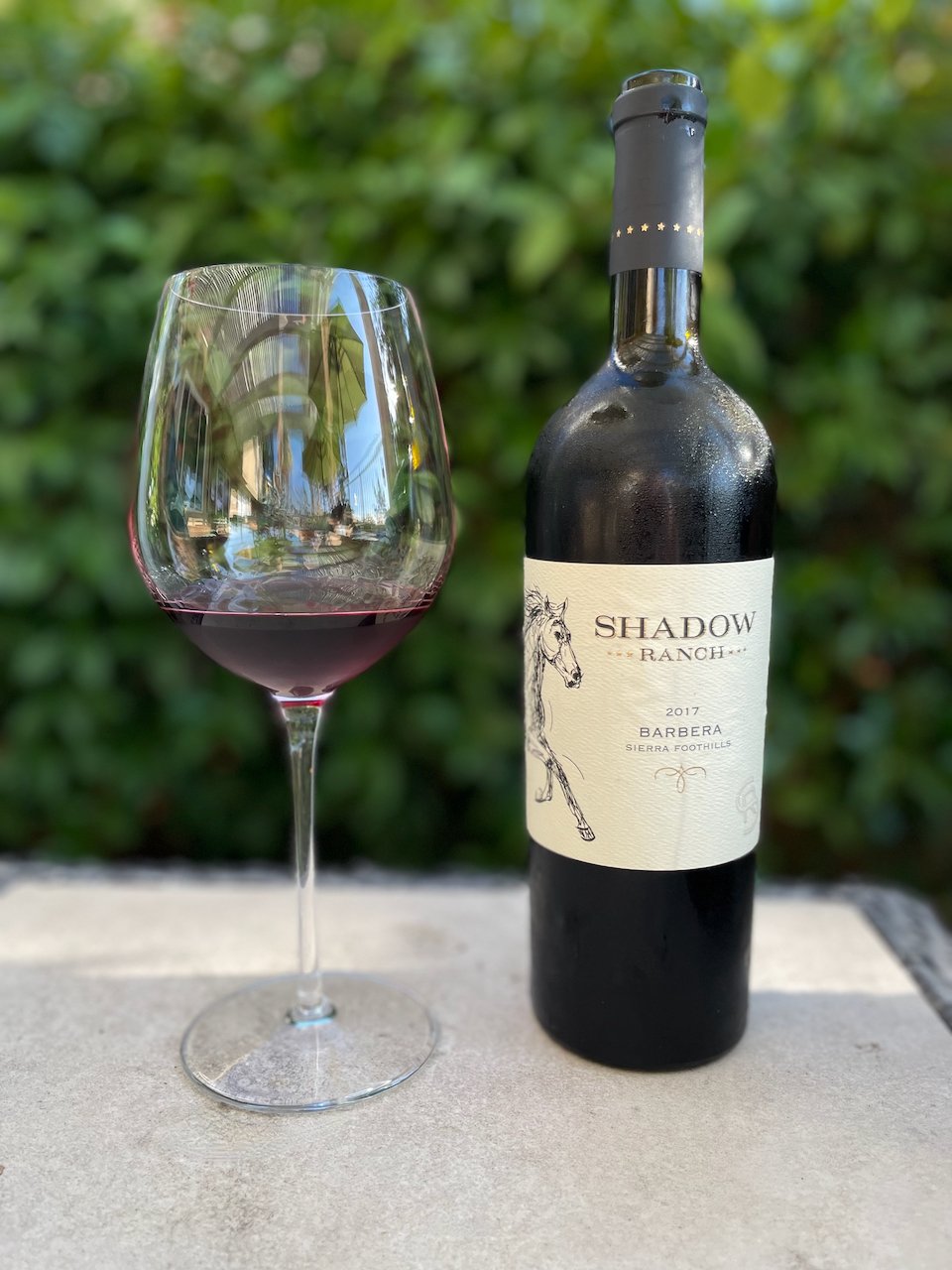2017 Shadow Ranch Barbera ($25)
Shadow Ranch, located in the Sierra Foothills of California, embraces the concepts of sustainable farming and having as little impact on the environment as possible. Their operation is solar powered and their vineyards are organically farmed.
With ten acres of vineyards at Shadow Ranch, their vineyards are planted in the fine-grained, well drained, decomposed granite which is common in the Fair Play region. Hilltop exposure positions the vines to receive cooling breezes in summer, preventing the grapes from maturing too quickly. In the winter, the hilltop exposure allows cold air to drain to the valley, which limits the damage from frost. This allows the grapes to stay on the vines long enough to develop the necessary complexity and concentration required to make great wine.
Sourced from their Sierra Foothills Vineyards, these Barbera grapes soak up the warm days and cool evenings of the hillsides. Fermented in small lots, these wines were pressed to 30% new French oak and aged 21 Months prior to bottling.
This Shadow Ranch Barbera is delightful with flavors of raspberry and blackberry. It is medium-bodied, with moderate acidity and light tannins. If you love Barbera, like I do, from the Sierra Foothills, this is an excellent example. And, their 2022 vintage was a Gold Medal Winner at the 2024 Foothill Wine Festival!
This is a great wine at a very affordable price which makes it a great fit as this week’s Behind the Cork™ Wine of the Week. Cheers!
The opinions expressed are entirely my own.






